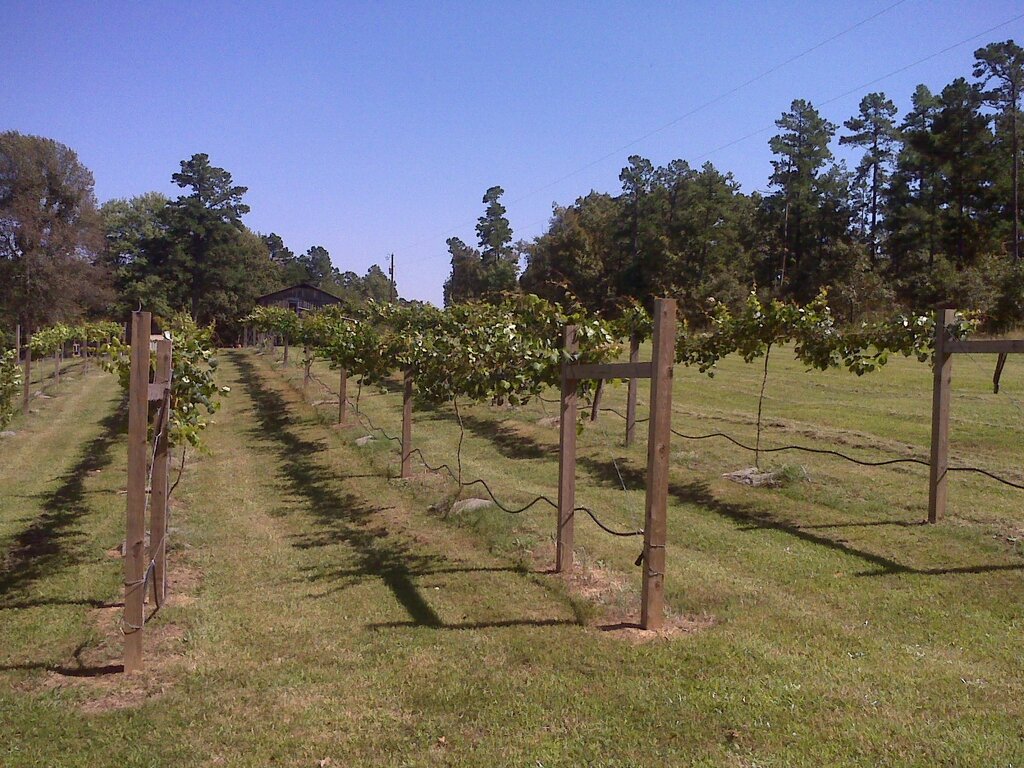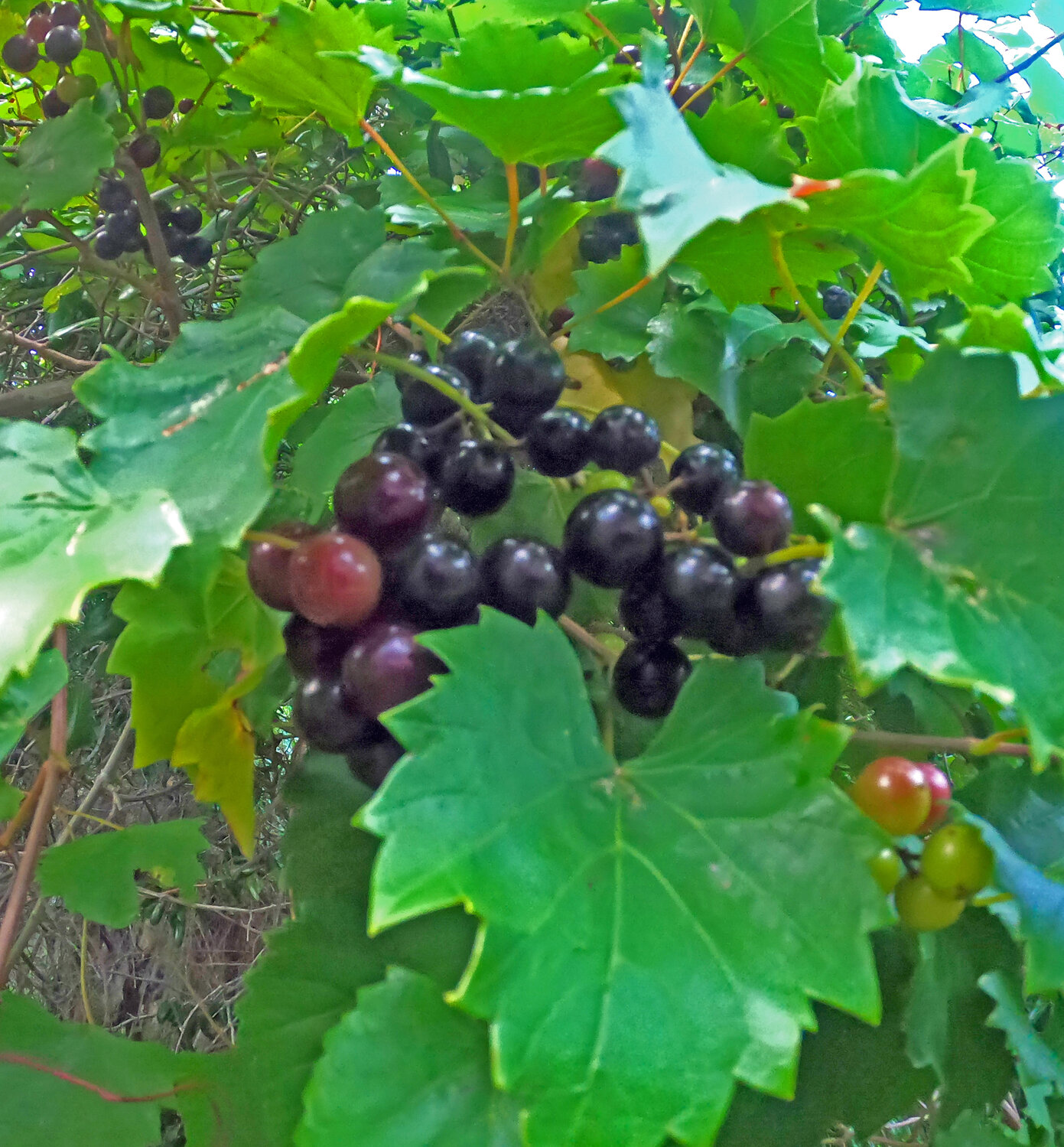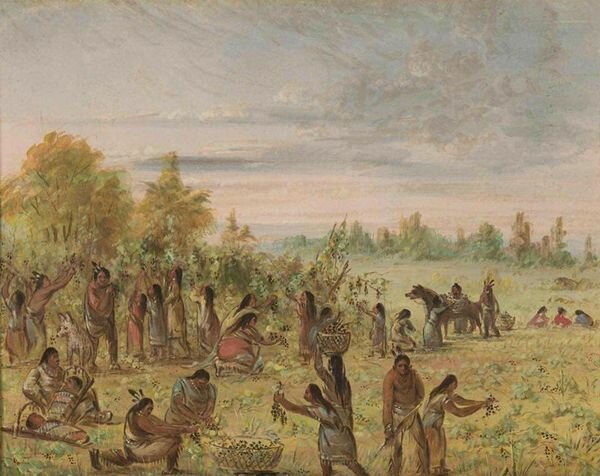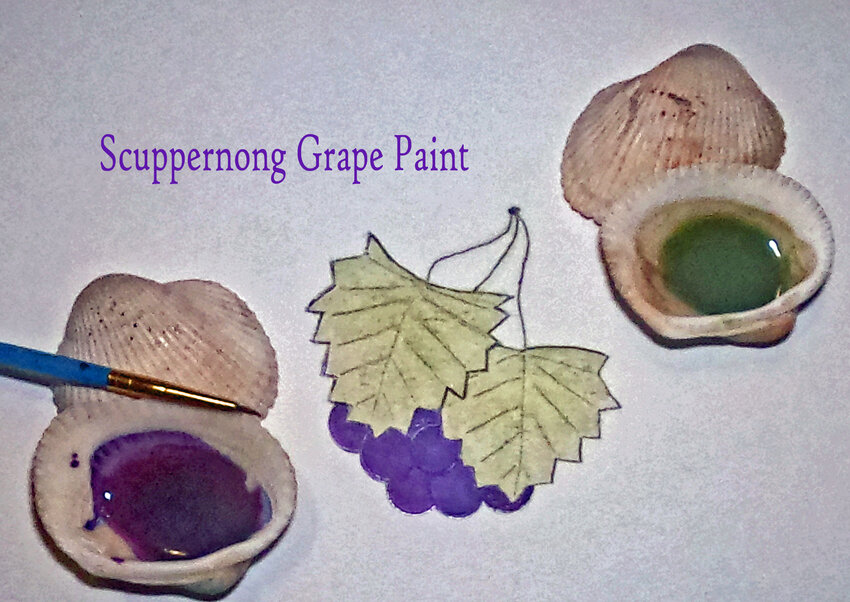Scuppernongs: The Old-Time Royalty of Summer
Each August, I get excited about foraging for wild grapes. I am fortunate to have a secret place in Nassau County where I can collect wild scuppernong grapes for my personal use. There are many varieties of muscadine grapes in North America, but my personal favorite is the scuppernong. Wild scuppernong grapes make the best grape jelly, and hence the best peanut butter and jelly sandwich on the planet.
As I have come to understand, all scuppernong grapes are muscadines but not all muscadine grapes are scuppernongs. Turns out there is a lot to know about native grapes in our region.
Muscadine grapes are native to North America, they can be found from Delaware to Florida and all the states lining the Gulf Coast to east Texas. Muscadine grapes can also be found along the Mississippi River north to Missouri.
Most scientists recognize that Vitis is divided into two subgenera: Euvitis – European and American bunch grapes and the Muscadania - muscadine grapes. Within the Muscadania subgenera there are more grape divisions, leaving us with over 100 cultivars varying in size and color. Muscadines can be light bronze to pink to purple to black with translucent flesh. They produce 4 to 10 grapes per cluster. Wild muscadine grapes bud in the spring and require 100-120 days to mature fruit.
The benefits of grapes are known in every culture throughout time. Almost all Indigenous North Americans took advantage of wild grapes and honored the gifts that grapes provide. In the Southeast, Vitis cinerea, known as graybark or pigeon grape, grow prolifically.
Indigenous uses for grapes include making an astringent from leaves to cleanse the skin. Grape leaves have been used to treat broken capillary veins. The Choctaws used Vitis aestivalis to treat coughs. Grapevine tendrils are used to treat rashes. The Creeks blended tendrils and the soft ends of the vine with ginseng for tonsillitis. According to Florida Ethnobotany by Daniel F. Austin, unripe grape juice (syrup of verjus) was used against obesity and as a diuretic.
Europeans have enjoyed a long relationship with Vitis. The grape vine is deeply rooted in Eurasian languages. The legendary Greek fabulist and storyteller Aesop crafted many fables including "The Fox and the Grapes." Old World Europeans used grapes for juice, syrup, jelly, jams, medicines, and wine. And, they brought their Old World uses and stories with them when immigrating to North America.
Peer-reviewed medical literature on heart protection, cataract prevention, cancer protection, and the slowing of aging through free radical scavenging by compounds in grapes and wines are widely accepted. Specifically, cyanidins and resveratrol are the beneficial compounds found in grapes that are good for us. Like everything in life, there are potential problems using Vitis for food and medicine with people who have allergies.
There are several basic culinary uses for grapes. The young leaves and stems can be cooked as greens. Grapes can be eaten fresh or dried for winter use. Old grape stems provide potable, safe drinking water. Grapevines have notable vascular systems and no water escapes the vine if cut stems are kept upright. A one-foot stem segment of a mature grape vine can produce up to a liter of water. Water stored in the vine of grape nourishes the fruit allowing anyone to turn water into wine.
Speaking of wine, I grew up attending a Southern Baptist church. Grape juice was considered sacred, wine was not. Most of the homemade wine I have ever tasted is downright awful, with one exception. The Holton branch in my family tree mastered the art of wild scuppernong wine-making.
The best homemade scuppernong wine I ever tasted came from my uncle Bud Holton and cousin Jerrod Posey. Bud and Jerrod knew where to collect wild scuppernong grapes each season. They had a tried-and-true recipe that they relied on each summer to produce the best wild scuppernong wine between here and central Georgia. Bud and Jerrod’s wild scuppernong wine, like the juice, was velvety and heavy. It was a work of art for your palate, for sure. Uncle Bud and cousin Jerrod have passed on, and they took their scuppernong wine recipe details with them. A few family members claim to have Bud and Jerrod’s recipe, but I have yet to see or taste any of their wild scuppernong wine efforts. Perhaps, it is time for me to try scuppernong winemaking for myself.
All varieties of muscadine wine are known as the “sodium pentothal of the south.” I am not sure who came up with this saying, but it sure is true. Guests sipping muscadine wine on the front porch begin to blurt out stories by glass number two. I know a few family tales that begin with “we got into Uncle Bud’s scuppernong wine one afternoon …”
There is one use of scuppernong grapes I tried for the first time this week. I made paint out of grapes. Crushed wild scuppernong grapes produce a deep purple color. One can easily understand why the grape was used for thousands of years as a pigment. Grapes produce a magnificently vibrant color that is hard to describe. So, I created a simple painting of grapes, using pigment produced by grapes, for you to see for yourself. Scuppernong purple has a soothing, deep, rich color. It is just lovely.
Finally, no one relates how the grapevine entwines itself into our lives better than singer Marvin Gaye. Pour yourself a glass of wine -- or grape juice if you are a Southern Baptist -- and enjoy this 1968 classic song, “I heard it through the Grapevine.”












